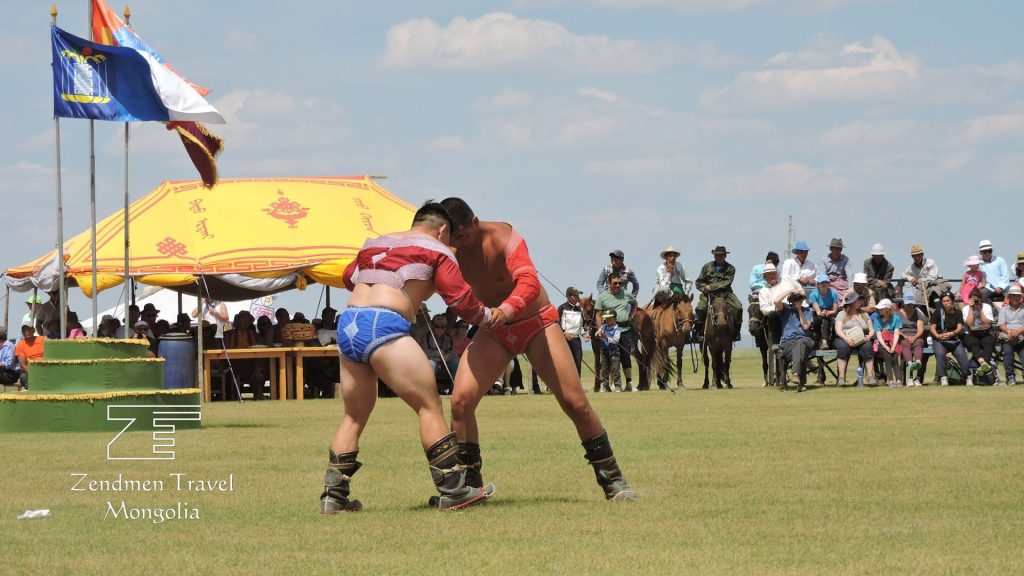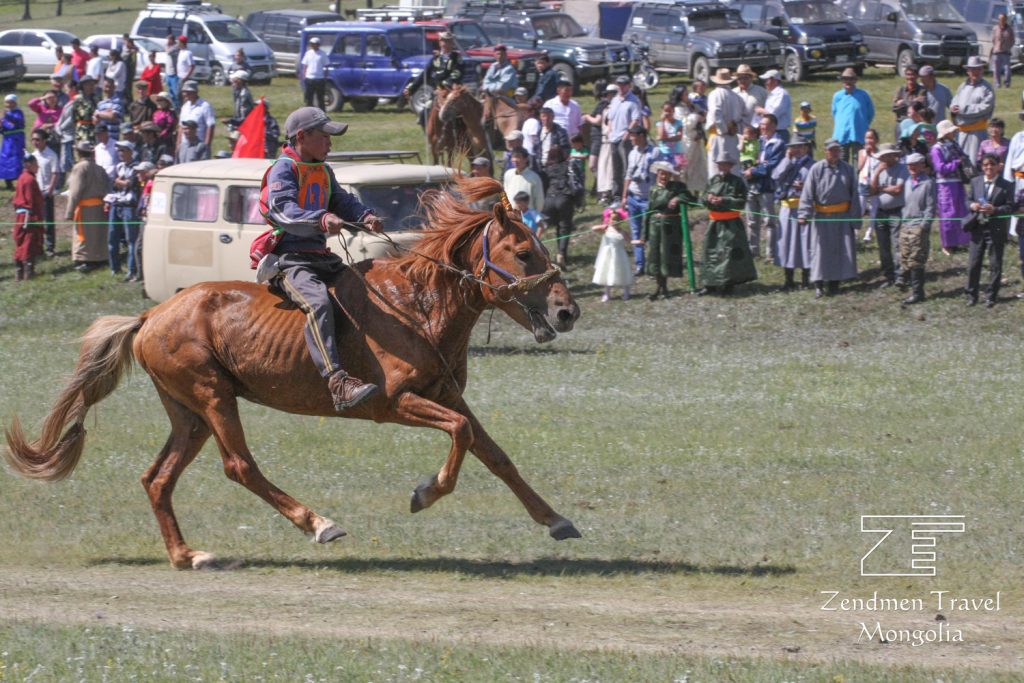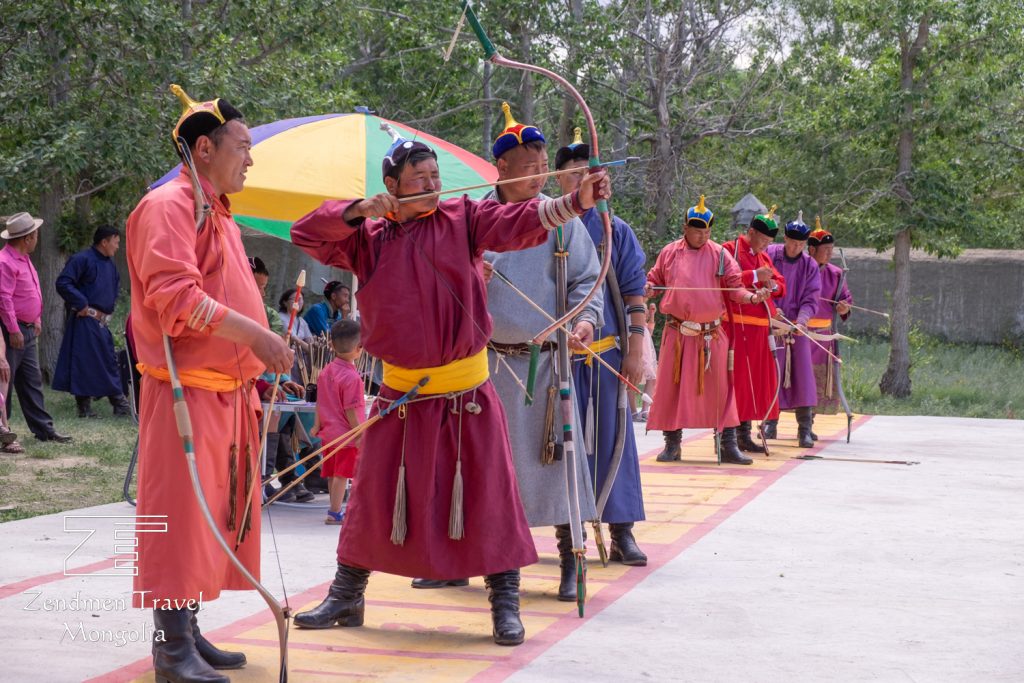Introduction: Naadam is a traditional Mongolian festival celebrated annually, showcasing the “Three Manly Games” – wrestling, horse racing, and archery. Rooted in nomadic culture, the festival highlights the skills historically essential for survival on the steppes. Wrestlers engage in intense matches, horse races cover vast distances, and archers display precision with traditional bows. Beyond sports, Naadam features cultural performances, traditional music, dance, and vibrant costumes. The festival promotes national unity, preserves cultural heritage, and symbolizes Mongolia’s resilience. It serves as a dynamic celebration, combining athleticism, cultural expression, and a deep connection to Mongolia’s nomadic past.
The Three Pillars of Naadam: The “Three Manly Games” are traditional Mongolian sports that form the core of the Naadam Festival, a celebration deeply rooted in the nomadic culture of Mongolia. These games showcase the skills and attributes traditionally associated with the ideal Mongolian warrior. The three sports are:
- Wrestling (Bökhiin barildaan): Mongolian wrestling, or Bökh, is a centuries-old tradition that embodies strength, technique, and respect. Wrestlers, known as “bökh,” wear unique costumes consisting of tight-fitting shorts, open-fronted jackets, and boots. The matches take place in an open field, and the objective is to throw the opponent off balance or force them to touch the ground with any part of their body other than their feet and palms. Bökh wrestling competitions are elimination-based, and the last wrestler standing is crowned the champion.

2. Horse Racing (Hurdan Morinii Uraldaan): Horse racing has deep cultural significance in Mongolia, given the nomadic lifestyle and reliance on horses for transportation and herding. During Naadam, young jockeys, often children, compete in long-distance horse races across the vast steppes. The races can cover significant distances, testing the endurance and riding skills of both the horses and the jockeys. Horse racing is not just about speed but also about the ability to navigate challenging terrains.

3. Archery (Sur Harvaa): Archery, or Harvaa, is the third component of the Three Manly Games. Mongolian archery is distinct for its use of a thumb ring, and competitors shoot arrows at small targets from significant distances. The targets are often leather cylinders or small, fabric-bound stacks of hay. Archers display remarkable precision and accuracy. The archery competitions are a display of skill and focus, reflecting the historical importance of archery in hunting and warfare. In the archery arena, precision meets tradition as arrows find their mark in a display of skill passed down through generations.

These three sports, wrestling, horse racing, and archery, collectively symbolize the qualities of a skilled and capable warrior in Mongolian culture. The Three Manly Games are not only athletic competitions but also a celebration of the nomadic way of life, where strength, agility, and precision were vital for survival in the challenging landscapes of the Central Asian steppes. The Naadam Festival provides a platform for communities to come together, celebrate their heritage, and witness the prowess of the participants in these traditional games.
Cultural significance
The Naadam Festival holds profound cultural significance in Mongolia, serving as a vibrant tapestry that weaves together various elements of the nation’s rich heritage. Here are some key cultural significances associated with the Naadam Festival:
- Symbol of Independence and Sovereignty:
- Naadam has been linked to the assertion of Mongolia’s independence. The festival serves as a platform for Mongolians to express their identity and resilience in the face of external influences. It is a symbol of the nation’s sovereignty and a reflection of the spirit that has sustained the Mongolian people throughout their history.
- Preservation of Tradition:
- Naadam is a testament to Mongolia’s commitment to preserving its traditional way of life. The festival’s core events, deeply rooted in the nomadic culture, provide a living showcase of ancient practices passed down through generations. It plays a vital role in maintaining and transmitting Mongolia’s cultural identity to future generations.
- Cultural Unity and National Pride:
- Naadam serves as a unifying force, bringing people from diverse backgrounds and regions together to celebrate their shared cultural heritage. The festival fosters a sense of national pride and solidarity among Mongolians, emphasizing the importance of their cultural legacy in the face of modernization.
- Spiritual Significance:
- Naadam is often associated with spiritual elements, incorporating rituals, blessings, and ceremonies. The opening and closing ceremonies, as well as traditional practices during the festival, carry symbolic meanings that connect participants to their spiritual beliefs and the natural world.
- Promotion of Sportsmanship and Fair Play:
- The competitive nature of Naadam’s sports encourages sportsmanship and fair play. Wrestlers, archers, and horseback riders engage in friendly competition, emphasizing respect for opponents and adherence to established rules. These values are integral to the cultural fabric of Mongolian society.
- Showcasing Artistic and Cultural Expressions:
- Beyond the sports, Naadam showcases various forms of artistic expression, including traditional music, dance, and attire. The festival becomes a canvas for cultural performances, highlighting the aesthetic aspects of Mongolian heritage.
- Economic and Social Significance:
- Naadam is a major social and economic event, attracting participants and spectators from across the country. It stimulates economic activities, from the sale of traditional crafts to hospitality services. The festival fosters social interactions, reinforcing community bonds and providing a platform for people to come together.
In essence, Naadam is more than a series of athletic competitions; it’s a living manifestation of Mongolia’s cultural resilience, unity, and enduring connection to its nomadic roots. The festival stands as a cultural cornerstone, echoing the spirit of the Mongolian people throughout the ages.
If you are keen to experience the Naadam festival we offer 1 day and multiday Naadam tours.






